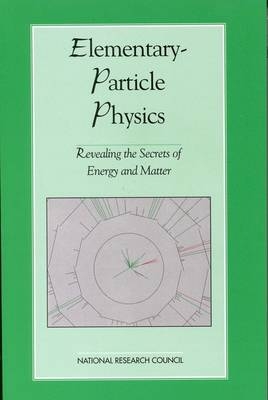
Elementary-Particle Physics
Revealing the Secrets of Energy and Matter
Seiten
1998
National Academies Press (Verlag)
978-0-309-06037-0 (ISBN)
National Academies Press (Verlag)
978-0-309-06037-0 (ISBN)
As physicists have probed ever deeper into the structure of matter, they have begun to explore one of the fundamental questions that one can ask about the universe: What gives matter its mass? Part of the "Physics in a New Era" series of assessments of the various branches of the field, this title explains the picture of how matter is constructed.
Part of the Physics in a New Era series of assessments of the various branches of the field, Elementary-Particle Physics reviews progress in the field over the past 10 years and recommends actions needed to address the key questions that remain unanswered. It explains in simple terms the present picture of how matter is constructed. As physicists have probed ever deeper into the structure of matter, they have begun to explore one of the most fundamental questions that one can ask about the universe: What gives matter its mass? A new international accelerator to be built at the European laboratory CERN will begin to explore some of the mechanisms proposed to give matter its heft. The committee recommends full U.S. participation in this project as well as various other experiments and studies to be carried out now and in the longer term.
Table of Contents
Front Matter
Executive Summary
1 Introduction
2 What is Elementary-Particle Physics?
3 Symmetries, Forces, and Particles
4 The Past 25 Years: Establishing the Standard Model
5 The Physics of the Next Decade
6 Accelerators and Detectors: The Tools of Elementary-Particle Physics
7 The Role of New Facilities
8 Accelerator-Detector Technology and Benefits to Society
9 Interactions with and Connections to Other Branches of Physics and Technology
10 Elementary-Particle Physics in Today's Society
11 Conclusions and Recommendations
Appendix: Glossary, Abbreviations, and Acronyms
Part of the Physics in a New Era series of assessments of the various branches of the field, Elementary-Particle Physics reviews progress in the field over the past 10 years and recommends actions needed to address the key questions that remain unanswered. It explains in simple terms the present picture of how matter is constructed. As physicists have probed ever deeper into the structure of matter, they have begun to explore one of the most fundamental questions that one can ask about the universe: What gives matter its mass? A new international accelerator to be built at the European laboratory CERN will begin to explore some of the mechanisms proposed to give matter its heft. The committee recommends full U.S. participation in this project as well as various other experiments and studies to be carried out now and in the longer term.
Table of Contents
Front Matter
Executive Summary
1 Introduction
2 What is Elementary-Particle Physics?
3 Symmetries, Forces, and Particles
4 The Past 25 Years: Establishing the Standard Model
5 The Physics of the Next Decade
6 Accelerators and Detectors: The Tools of Elementary-Particle Physics
7 The Role of New Facilities
8 Accelerator-Detector Technology and Benefits to Society
9 Interactions with and Connections to Other Branches of Physics and Technology
10 Elementary-Particle Physics in Today's Society
11 Conclusions and Recommendations
Appendix: Glossary, Abbreviations, and Acronyms
Committee on Elementary-Particle Physics, National Research Council
1 Front Matter; 2 Executive Summary; 3 1 Introduction; 4 2 What is Elementary-Particle Physics?; 5 3 Symmetries, Forces, and Particles; 6 4 The Past 25 Years: Establishing the Standard Model; 7 5 The Physics of the Next Decade; 8 6 Accelerators and Detectors: The Tools of Elementary-Particle Physics; 9 7 The Role of New Facilities; 10 8 Accelerator-Detector Technology and Benefits to Society; 11 9 Interactions with and Connections to Other Branches of Physics and Technology; 12 10 Elementary-Particle Physics in Today's Society; 13 11 Conclusions and Recommendations; 14 Appendix: Glossary, Abbreviations, and Acronyms
| Erscheint lt. Verlag | 1.5.1998 |
|---|---|
| Verlagsort | Washington |
| Sprache | englisch |
| Maße | 152 x 229 mm |
| Themenwelt | Naturwissenschaften ► Physik / Astronomie ► Hochenergiephysik / Teilchenphysik |
| ISBN-10 | 0-309-06037-0 / 0309060370 |
| ISBN-13 | 978-0-309-06037-0 / 9780309060370 |
| Zustand | Neuware |
| Haben Sie eine Frage zum Produkt? |
Mehr entdecken
aus dem Bereich
aus dem Bereich
The Biggest Ideas in the Universe
Buch | Hardcover (2024)
Dutton (Verlag)
CHF 36,15
Neue Sicht auf die Bausteine der Welt
Buch (2024)
Spektrum der Wissenschaft (Verlag)
CHF 13,70


